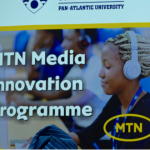There have been hundreds of digital educational technologies made available for teachers in recent times. The main purpose is to aid the teaching process and give the teachers the option of making learning an interesting one for the students. The educational technologies provide educational materials for the students, measure the impact of their lectures as well as the students’ performance, communicate with parents, and do other interesting stuff that helps in the learning process.
The main reason for educational technology is to improve education. As a teacher or educator, you must have a defined goal that will guide you in knowing what to expect from your classroom. It will also help you discover the most effective ways of enhancing the learning environment.
It is good to analyze the curriculum and select the appropriate educational technology for a particular situation, as well as the mode of carrying out the lectures. There has been an upgrade in the type of learning materials used today. Teachers need to understand the types of available materials, how to use them, their impacts, when to use them, and how to integrate them into the learning process or environment. Also, put into consideration how the learning materials can affect what and how to learn.
Table of Contents
Top Digital Educational Technology for Teachers
The following digital tools are great for making videos, animations, infographics, presentations, and assignments, quizzes, and tests, among others. Traditional methods of carrying out educational instructions are already undergoing changes in order to adapt to the needs of students in the contemporary world. Incorporating educational technology into teaching incites the curiosity of the students and makes them eager to learn. This will help even the dullest of them to easily understand the teacher.
The following technological tools are very helpful to teachers in impacting their students:.
1. Prezi:
Prezi helps to create interactive presentations. It is suitable for both the teacher and the students. By zooming, Prezi is more effective, persuasive, and engaging than PowerPoint presentations. It is, without doubt, one of the best digital tools to keep the attention of the students.
2. Haiku Deck:
Haiku Deck can help you make presentations easily on your iPad or iPhone. It works online and has a collection of stock photos that can help in creating image-based slides. It can also be integrated into a Google Classroom, one of the latest technologies for teachers.
3. Animoto:
Animoto offers a range of digital videos that can be integrated into the teaching process. It helps in easily creating animated videos. Creating photo slideshows, stitching different videos together, and adding text and images are all what you can achieve using Animoto. Both teachers and students can use the technology for maximum educational achievement.
4. Explain everything:
Explain Everything helps educators and their students to interact seamlessly in a virtual environment. It encourages group activities by helping them to collaborate on an interactive whiteboard. It can be integrated with OneDrive, GoogleDrive, Evernote, Dropbox, schoolwork, and others. Explain Everything also has a drag-and-drop option that makes it very easy to work with.
5. Educreations:
Educreation works the same way as Explain Everything, which makes them supplementary to each other. It is an interactive whiteboard and screen-casting tool that enables both teachers and students to teach and learn from anywhere. Students can learn at their own pace, and the teacher can have access to each student in order to assess his performance.
6. Flipsnack:
This is a digital tool that will enable the teacher to boost the level of engagement of his or her students. It is an app for creating flip books, and students can also use it for presenting projects in a unique way. It can be integrated with PDFs and JPEGs to carry out your work. Just upload your image, write your information, and let the world see what you can do.
7. Edmodo:
Edmodo is suitable for educators, students, and parents. It provides a virtual classroom, which gives the parties involved access to many online resources. It is a kind of social networking app, which would make it pretty much easier for anyone to join and interact with other users in the community. As an educator, you can create an online or digital classroom and invite your students and their parents for learning and interactions. That is not all; assignments and reports can be passed on using the medium. You can also check on them and pass on your information without having to stress yourself too much.
8. VoiceThread:
VoiceThread is a very interesting app relevant to practicing pronunciation and oral language. It records the student while talking and helps the teacher assess the performance and confidence level of that student. The students can use VoiceThread to practice their speaking skills. This will help them build their confidence while getting better at pronunciation.
9. Google Classroom:
This is an app that allows both educators and students to easily and freely share apps with one another. The educator can post assignments on the platform for the students to complete and assess themselves. The educator can also share information with the students and email their parents using the app. It is integrated with Google Drive and allows teachers to use Google Docs, Google Forms, and other Google services to create and store information.
10. Prodigy:
Prodigy is a math app that is very relevant to teachers and students. The teacher can effectively engage the students as well as encourage them to self-practice math in and out of school. It also boosts learning outcomes and test scores for students at all proficiency levels and economic backgrounds. It is designed by trained and certified math educators. Furthermore, the content is aligned with the curriculum, which covers all the major math topics.
Some tools needed for educational technology
Materials or tools needed for educational technology are tools needed by every educator in order to incorporate them into their own teaching for effective learning. You must take into consideration the goal of improving a particular area of teaching and learning. The tools for carrying out these improvements include:
1. Configuration.
The educator should understand how best to equip and use technology in the classroom. They also need to have access to technological equipment when needed. Similarly, they should be able to know how to use and display the internet, software programs, audiotapes, videotapes, and others, as well as integrate them into their learning methods. These should also be made available to the students for effective learning.
2. Software Tools.
Teachers need to understand the relevant software tools, how to use them, how to teach them, and their aims in the classroom. Some software tools include databases, spreadsheets, word processing, graphic paint programs, presentations, and so on.
3. computer-managed instructions.
These are also called integrated learning systems. The teachers are required to know what they entail, how to use them, when to use them, what grade of students need to use them, what subject areas they are used in, and their roles in imparting knowledge.
4. Multimedia Integration.
Teachers are expected to know how to create and find graphics, images, video and audio files, animations, and so on. Furthermore, they should know how to import these tools into their presentations and learning materials and also understand the reasons for integrating multimedia tools into their teachings.
5. Distance Education.
Educators are required to know how to create courses for distance education, the techniques for delivering their teachings, and the importance of this approach in education. Tools needed for distance education include the internet, television, audiotaped and videotaped materials, instructional manuals, slides, satellites, and so on.
6. Audio and Video Conferencing:
Educators should understand what audio and videoconferencing are and how to integrate them into the learning process. In addition, they should understand the different teaching methods that could be best integrated with these technologies and their relevance in education.
7. Web pages.
Web pages have different duties, such as displaying information and creating student interaction. Students can also be more independent with the help of web pages.
8. The Internet.
With good access to the internet, every other technology can fall into place. Educators should be able to search for information on the internet as well as analyze and assess the information obtained. It is also important to know how to use the Internet and email. Mailing lists, newsgroups and FTP (file transfer protocol). These systems have a very powerful influence on the learning process if utilized properly.
9. Technological Configuration.
There are three available technological configurations: additive, integrated, and independent. Each configuration has a spectacular way of implementing it, and their uses in the classroom differ from one another. Teachers need to know all these things.
10. Instructional Materials.
Creating and designing instructional materials are very vital to the learning process. What type of materials to create for effective learning and meeting students’ needs should not be overlooked.
11. Moral, legal and ethical issues.
Educators are meant to understand these issues and their influence on the teaching process. These issues include copyright, access to information, how to use the information obtained, and so on. They have a way of affecting what is done in the classroom, and teachers must be aware of all of these.
12. New software and hardware.
Educators need to be up-to-date on the type of technology that best suits the moment, how it is being developed, and its uses in the classroom. Similarly, they also have the duty of learning how to use technology and integrating it into their teaching.
The Most Effective Ways to Use Technology in the Classroom
To be frank, many teachers encounter difficulties when using technology in the classroom. This will certainly affect the impact they have on the students’ academic performance while learning. It is very important to master each technology before using it so as to deliver your lectures effectively with little or no stress. The following points will help you function at your best.
1. Introduce a game-based learning platform.
Most game-based learning platforms are designed to engage students and help them crack difficult topics or subjects. Video games will be very helpful in such a situation. If possible, introduce a learning app that is more in the form of quizzes and puzzles. A very interesting app is Prodigy, a math app that helps teachers create virtual classrooms, track the progress of the students, and deliver customized questions. This app is also made available at no cost.
2. Calm a noisy class.
There are teaching tools that track and show classroom noise. A perfect example is an app called Too Noisy. When the classroom becomes noisy, the meter spikes, alarming everyone and helping the students to reduce the noise.
3. Use videos for some topics.
Some topics can actually be delivered through videos. You can combine the videos with audio and texts, or just leave the videos alone. TeacherTube is an online video app, another work of YouTube, to help teachers cover their core subjects. To aid your teaching, search for specific topics or browse by topic categories. Animated videos can also do wonders in the classroom; do not neglect to involve them. There are students who learn better using visual aids. This will benefit them a lot.
4. Make use of live videos.
As a teacher, you can sit on your desk with your students surrounding you, watching something on your teaching device, preferably a tablet. It could be an ongoing lecture somewhere or something happening live that you all are watching and getting to be a part of. Bringing in a virtual expert will help to liven up your class and give your students a separate feeling. Making use of Skype or Google Meet will be a very helpful approach. On Skype, you will be able to see a list of guest speakers who would be willing to be part of your class virtually. You can discuss the topic ahead of time with your students and let them know what to expect. This will help them prepare their questions beforehand.
5. Podcasts will add some liveliness too.
Playing podcasts of other teachers or authorities on that topic will be helpful in delivering your lectures. There are different podcasts online that you can play for your students, ranging from lessons about studying techniques and strategies to interviews with the authors of the books your students are currently reading, lectures from professors of institutions, and so on. You can also teach your students how to create and play their own podcasts, which will help them understand how to use technology.
6. Add multimedia elements to the teachings.
Multimedia elements like images, sound clips, podcasts, animations, short videos, and so on will be very effective. You can get free online tools and play it in the form of a slideshow. This will help the students be more engaged.
7. You can send suitable content to your students.
There are suitable contents that your students can benefit from, especially now that almost everyone has a smartphone. For example, you can create a virtual classroom for your students where you can deliver assignments, give them an unofficial lecture, check up on them, drop information, and so on. You can deliver suitable math content using Prodigy.
8. Give online activities to students who complete their work early.
To keep your students busy after completing their class task, you can get them engaged by giving them activities online. It can be in the form of a game, videos, or other activities. Make sure what you give them is educational and interesting. This will also reduce noise and distractions in the class.
9. Discuss some online content.
You can discuss particular content online, probably a different formula used to solve math problems. Other subjects can be brought in. All you need to do is study and review it together, making sure everyone brings in his or her own views or ideas.
10. Give them assignments that are technologically based.
Teach them about technology and give them assignments to do hands-on practice with it. You can also base your assignments on subjects related to technology. This can help them do some research and gain more knowledge about the internet.
Read Also: 15 things You Didn’t Know About Studying Computer Science
The importance of digital educational technology to educators
There are uncountable reasons that make technology a vital aspect of learning in schools. In this era, educational technology is an unavoidable tool for carrying out teaching and learning processes. Technology makes it easier for teachers to do their jobs. Students can ask any question in the classroom and get the answers quickly. They are not just helpful in the classroom; the students will also rely on them while choosing their career opportunities as well as surviving the business world.
The free digital educational tools that are available online help students learn almost anything online. They have access to every educational tool and can even learn some accredited courses in order to earn a degree without having to pay any tuition. Because some children are already familiar with smartphones and tablets, they can leverage their knowledge to learn anything, whether the topic is in the scheme of work or not. There are so many reasons why educational technology is relevant to educators and their students. Some of them are listed below.
1. It enables the students to learn at their own pace.
The traditional classroom settings sometimes make it difficult for students to learn at their own pace. But with the introduction of digital technology, they can take their time to study. A student can slow down, go back to the lesson, and learn over and over until he or she has assimilated the content well. This will enable the teacher to focus on other things as well as move on to the next topic faster.
2. Having access to technology helps the students learn almost anything.
There are no limitations to what the students can learn, and they can try out any learning style until they have mastered it. The teacher can come up with more creative ways of teaching the subject and keeping the students engaged in better ways. The implementation of digital technology in learning will also help disadvantaged students learn what their counterparts in better learning environments are learning.
3. Digital technology enhances the relationship between teachers and their students.
When a teacher effectively incorporates technology into his subject, it will help him grow in the roles of adviser, content expert, and coach. This will draw the students closer to him. The students also relate well with one another, thereby enhancing the relationship existing among them. This also makes learning more fun while breaking the barrier between teachers and students.
4. Technology keeps the students engaged.
Students learn best when they interact with one another, and technology helps them achieve that. It also makes them stay focused and learn faster while discovering their areas of interest. With technology, there will be less play and more work for the students, especially after school. A teacher can leverage the learning apps and software to keep them engaged.
5. Technology simplifies access to educational resources.
When a teacher incorporates technology into the classroom, it will help the students become more adaptive to the technology and rely on them to learn anything he wishes at any time. With different learning apps and software installed on the phone or PC, the student will be able to have access to even topics not covered in the curriculum.
6. It is a must for students.
When kids are introduced to different digital learning technologies, it will help them feel confident and empowered to learn. They will be able to learn new things and acquire new skills that might even help them in the future.
7. Students can prepare for their future careers.
Technology is broadly used by professionals all over the world in different fields of study. Some of them are already incorporated into the classroom, which could help students become more familiar with them. This could spur their interest and help them choose their future career.
With options like online education, the cost of education is significantly reduced. Students who are disadvantaged can leverage digital educational technology to study and learn with ease. Educators can also use the medium to equip themselves so as to bring out the best in the classroom. There are numerous digital technologies serving different purposes for different educators. With them, learning will be fun, and it will subsequently be a win-win for the teachers, their students, and their parents.
Read Also: How to get loans to study in the USA and Canada









